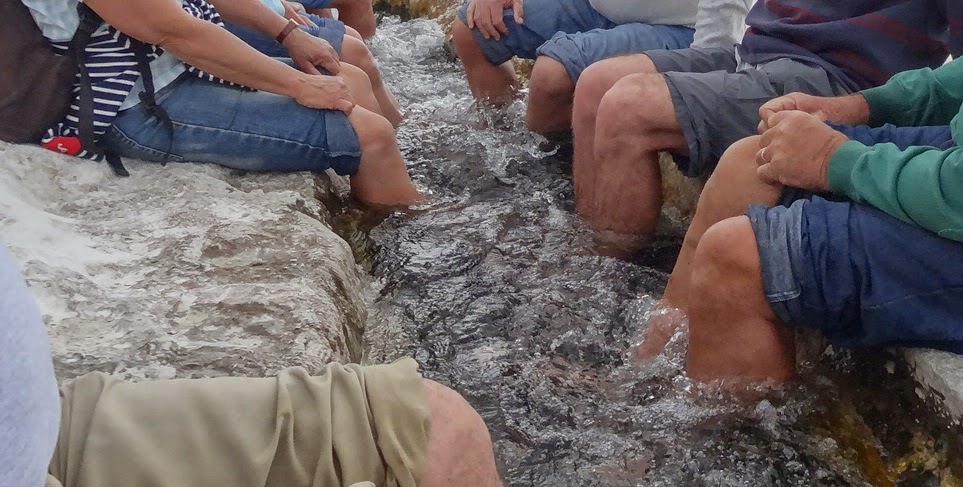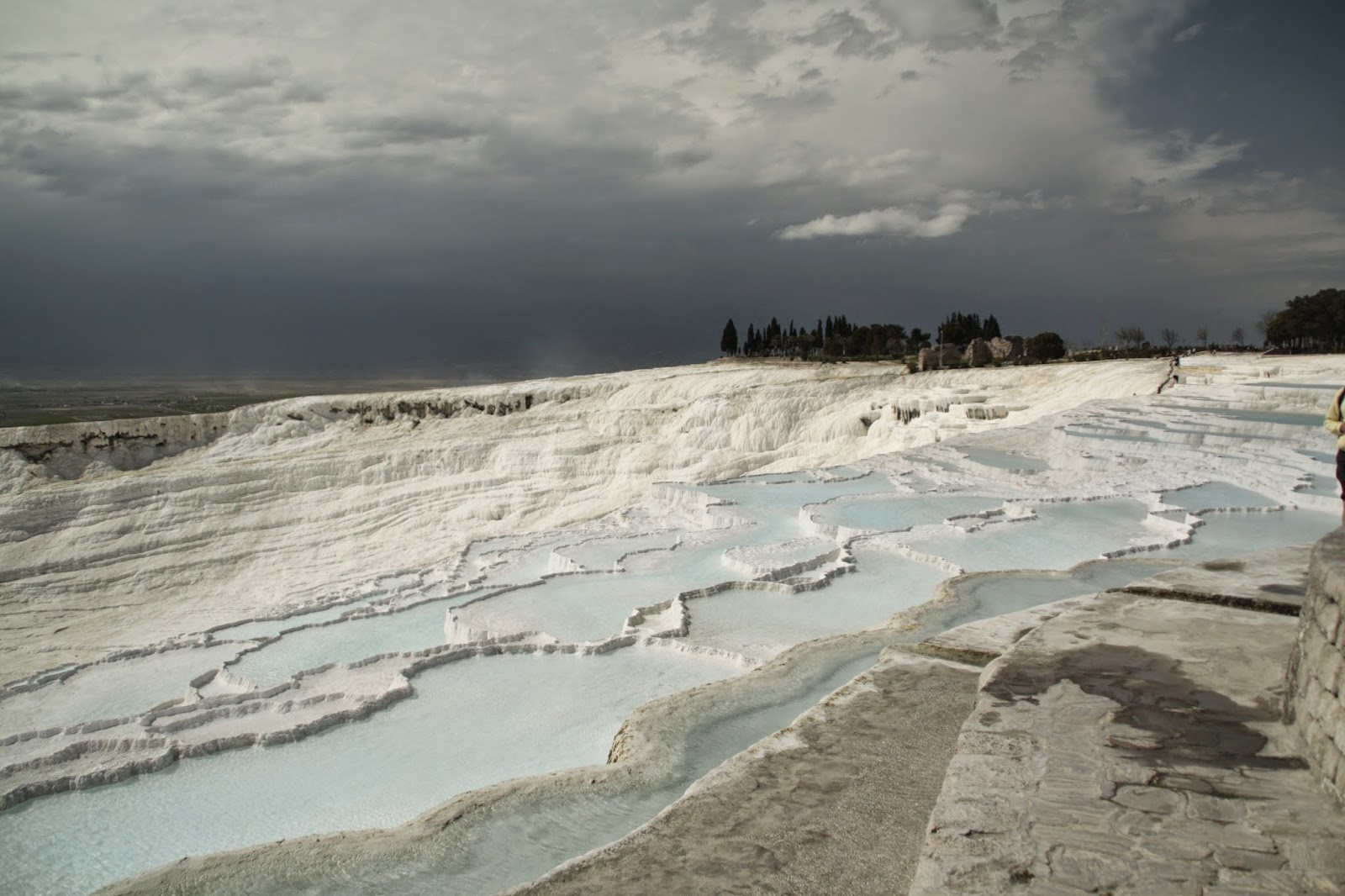Tyfun tells us about the history of Hieropolis
Finike mariners
The trip was fun from the outset, with great company comprising cruisers from a dozen countries and many lifetimes of experience. The drive to Pamukkale was splendid. As the altitude rose steadily, the orange groves of Finike gave way to apple and almond blossom, with small traditional villages nestled in the valleys. Most of the homes had great stacks of firewood (fruit tree prunings?) beneath them, and pens for goats and sheep adjacent to the house. There was still plenty of snow on the mountain tops here, shimmering in the bright spring sunlight.
Just out of Pamukkale is the ancient site of Aphrodisias, dedicated, of course, to the goddess of love and beauty by the Greeks, but actually a site of human habitation for at least 5000 years. This area is famous for the quarrying of high quality white marble, so many of the city's statues and inscriptions have survived despite a devastating earthquake in the 7th Century that pretty much finished off Aphrodisias. Towns have sprung up since, and the last big earthquake hit the town of Geyre hard in 1956, so it was relocated to the west.
Ruins of the Temple of Aphrodite
The same series of earthquakes produced the ruins of Hieropolis, which we visited the next day. As always, the tombs seem to survive better than anything else, and there is a long front street of sarcophagi and funerary mounds - not my idea of a cheerful entry statement, but the ancient Greeks seem to have had a different perspective: a fine tomb was a mark of status and aesthetic pleasure. And of course, many of them would have been in the marble business.
Hieropolis is also the claimed site of the martyrdom of St Philip the Apostle, who was crucified with his seven sons. Eight individual chapels make up the spectacular church here - well worth the climb for the view alone. The trip to Hieropolis was made even more interesting by the company of Anne and Gordon, Scots friends from the neighbouring Warrior 40 Sarah Grace, who are keen birdwatchers and amateur botanists. Ruins are apparently ideal sites for both activities, and we thoroughly enjoyed finding and photographing some lovely birds and plants. My knowledge of European species is very limited, but its interesting to see the parallels with different niches in Australia, and to find what we think of as garden plants growing wild - especially the vivid red (and occasional purple) anemones. By the way, we would definitely recommend purchase of a Turkish Muzekart (Museum Card) for 50TL. It pays for itself very quickly if you like museums, galleries and ancient sites.
Anne and Gordon overlooking the ruins of Hieropolis
Anemones, dandelions and camomile
Despite all the fine artefacts in the museum at Hieropolis, my favourite piece was a double sarcophagus in the small folklore museum in the apple-growing town of Elmali. The departed couple, carved in relief on the lid, are clearly engaged in a tussle for the doona, and the woman (loser in the doona war) is wearing a nice pair of bed-socks!
We stayed two nights in the Colossae spa, which reflected its name by being enormous and catering to busloads of tourists, even in the quiet season. The hot mineral water is channelled into various pools for which many health and curative properties are claimed - arthritis, rheumatism, high blood pressure and skin complaints amongst them. Donning our fetching bathing caps (5TL), Terry and I relaxed in the indoor pool for half an our or so - very soothing at about 35C. The next day I tried out the hotter and more mineralized outdoor pool where I almost boiled myself alive and had to adjourn for a cool shower to recover. However, my arthritic hands did feel much better.
The highlight of the trip was a visit to the famous travertine terraces of Pamukkale (which translates to 'cotton castle', referring to the cotton plantations there, but also, perhaps, to the pure white calcium deposits of the site). The whole area is a bit like a giant stalagmite, formed from calcified hot water seeping from the volcanic mountains surrounding it. Shallow, scallop-shaped pools have formed as the water has made its way down the slopes, creating natural baths. Only a few of these can be used, to protect the structures, but there are plenty of hot water canals for soothing your weary feet. Like the 'fairy chimneys' of Cappadocia, the blinding white travertines and blue water create a landscape that seems surreal and could almost be on a different planet.

.Group+Photo.JPG)







No comments:
Post a Comment